Filter by

https://doi.org/10.7551/mitpress/3000.001.0001?locatt=mode:legacy;http://www.…
Annotation Japan's financial institutions and policy underwent remarkable change in the past decade. The country began the 1990s with a heavily regulated financial system managed by an unchallenged Ministry of Finance and ended the decade with a Big Bang financial market reform, a complete restructuring of its regulatory financial institutions, and an independent central bank. These reforms hav…
- Edition
- -
- ISBN/ISSN
- 9780262269872
- Collation
- 1 online resource (viii, 196 pages) :illustrations
- Series Title
- -
- Call Number
- -

https://doi.org/10.7551/mitpress/3001.001.0001?locatt=mode:legacy;http://www.…
This is the first broad cross-country assessment of the ties between financial structure--the mix of financial instruments, institutions, and markets in a given economy--and economic growth since Raymond Goldsmith's 1969 landmark study. Most studies focus on developed countries and compare bank-based and market-based systems. Debates over the relative merits of the two systems have relied on ca…
- Edition
- -
- ISBN/ISSN
- 9780262271455
- Collation
- 1 online resource (vi, 436 pages) :illustrations
- Series Title
- -
- Call Number
- -
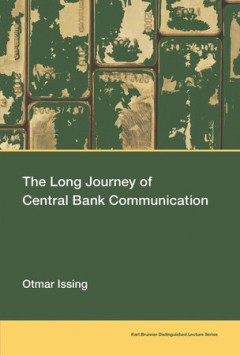
The long journey of central bank communication
Central bank communication has evolved from secretiveness to transparency and accountability—from a reluctance to give out any information at all to the belief in communication as a panacea for effective policy. In this book, Otmar Issing, himself a former central banker, discusses the journey toward transparency in central bank communication. Issing traces the development of transparency, ex…
- Edition
- -
- ISBN/ISSN
- 9780262355995
- Collation
- 1 online resource (104 pages).
- Series Title
- -
- Call Number
- -
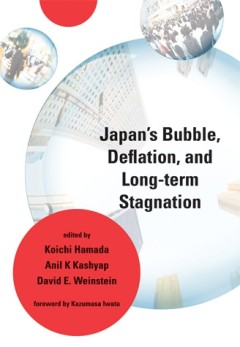
Japan's bubble, deflation, and long-term stagnation
Japan's economic bubble burst in the early 1990s, and the country entered its famous “lost decade”—a period of stagnation and economic disruption that persisted until 2003. The current declines in global equity and real estate markets have eerie parallels to Japan's economic woes of the 1990s. If we are to avoid repeating Japan's experience on a global scale, we must understand what happe…
- Edition
- -
- ISBN/ISSN
- 9780262289467
- Collation
- 1 online resource (xi, 420 pages) :illustrations
- Series Title
- -
- Call Number
- -
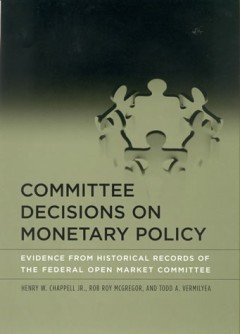
Committee Decisions on Monetary Policy: Evidence from Historical Records of t…
An examination of how the policy preferences of individual members of the Federal Open Market Committee are translated into monetary policy decisions.In many countries, monetary policy decisions are made by committees. In the United States, these decisions are made by the Federal Reserve's Federal Open Market Committee (FOMC), which consists of the seven members of the Board of Governors and th…
- Edition
- -
- ISBN/ISSN
- 9780262270168
- Collation
- 1 online resource (xv, 313 pages) :illustrations
- Series Title
- -
- Call Number
- -
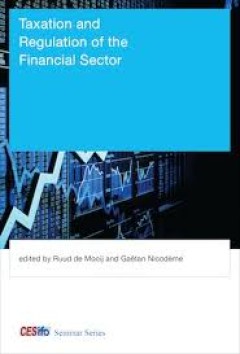
Taxation and Regulation of the Financial Sector
Analytical and empirical perspectives on the interplay of taxation and regulation in the financial sector.OCLC-licensed vendor bibliographic record.
- Edition
- -
- ISBN/ISSN
- 9780262321099
- Collation
- 1 online resource :illustrations.
- Series Title
- -
- Call Number
- -
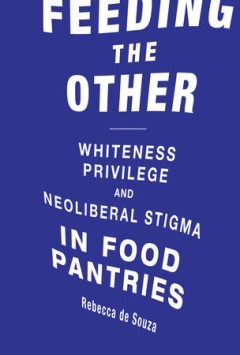
Feeding The Other :whiteness, privilege, and neoliberal stigma in food pantries
How food pantries stigmatize their clients through a discourse that emphasizes hard work, self help, and economic productivity rather than food justice and equity. The United States has one of the highest rates of hunger and food insecurity in the industrialized world, with poor households, single parents, and communities of color disproportionately affected. Food pantries--run by charitable an…
- Edition
- -
- ISBN/ISSN
- 9780262352789
- Collation
- 1 online resource (312 pages).
- Series Title
- -
- Call Number
- -

Paying with plastic :the digital revolution in buying and borrowing
The definitive account of the trillion-dollar payment card industry. The payment card business has evolved from its inception in the 1950s as a way to handle payment for expense-account lunches (the Diners Club card) into today's complex, sprawling industry that drives trillions of dollars in transaction volume each year. Paying with Plastic is the definitive source on an industry that has r…
- Edition
- 2nd ed.
- ISBN/ISSN
- 9780262272438
- Collation
- 1 online resource (xiii, 367 pages) :illustrations
- Series Title
- -
- Call Number
- -
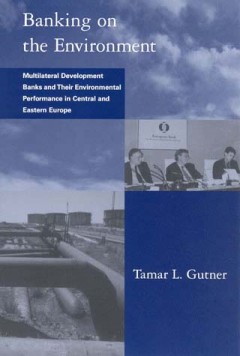
Banking on the environment :multilateral development banks and their environm…
Multilateral development banks (MDBs) are increasingly expected to address environmental issues in their economic development lending. Yet the banks have been accused of failing to implement their own environmental policies, thereby contributing to environmental degradation in borrowing countries. In this book Tamar Gutner analyzes the environmental policies of three MDBs: the World Bank, the E…
- Edition
- -
- ISBN/ISSN
- 9780262274531
- Collation
- 1 online resource (xi, 269 pages) :illustrations, map.
- Series Title
- -
- Call Number
- -

Guardians of finance :making regulators work for us
"The recent financial crisis was an accident, a 'perfect storm' fueled by an unforeseeable confluence of events that unfortunately combined to bring down the global financial systems. And policy makers? They did everything they could, given their limited authority. It was all a terrible, unavoidable accident. Or at least this is the story told and retold by a chorus of luminaries that includes …
- Edition
- -
- ISBN/ISSN
- 9780262301527
- Collation
- 1 online resource (xiii, 280 pages)
- Series Title
- -
- Call Number
- -
 Computer Science, Information & General Works
Computer Science, Information & General Works  Philosophy & Psychology
Philosophy & Psychology  Religion
Religion  Social Sciences
Social Sciences  Language
Language  Pure Science
Pure Science  Applied Sciences
Applied Sciences  Art & Recreation
Art & Recreation  Literature
Literature  History & Geography
History & Geography